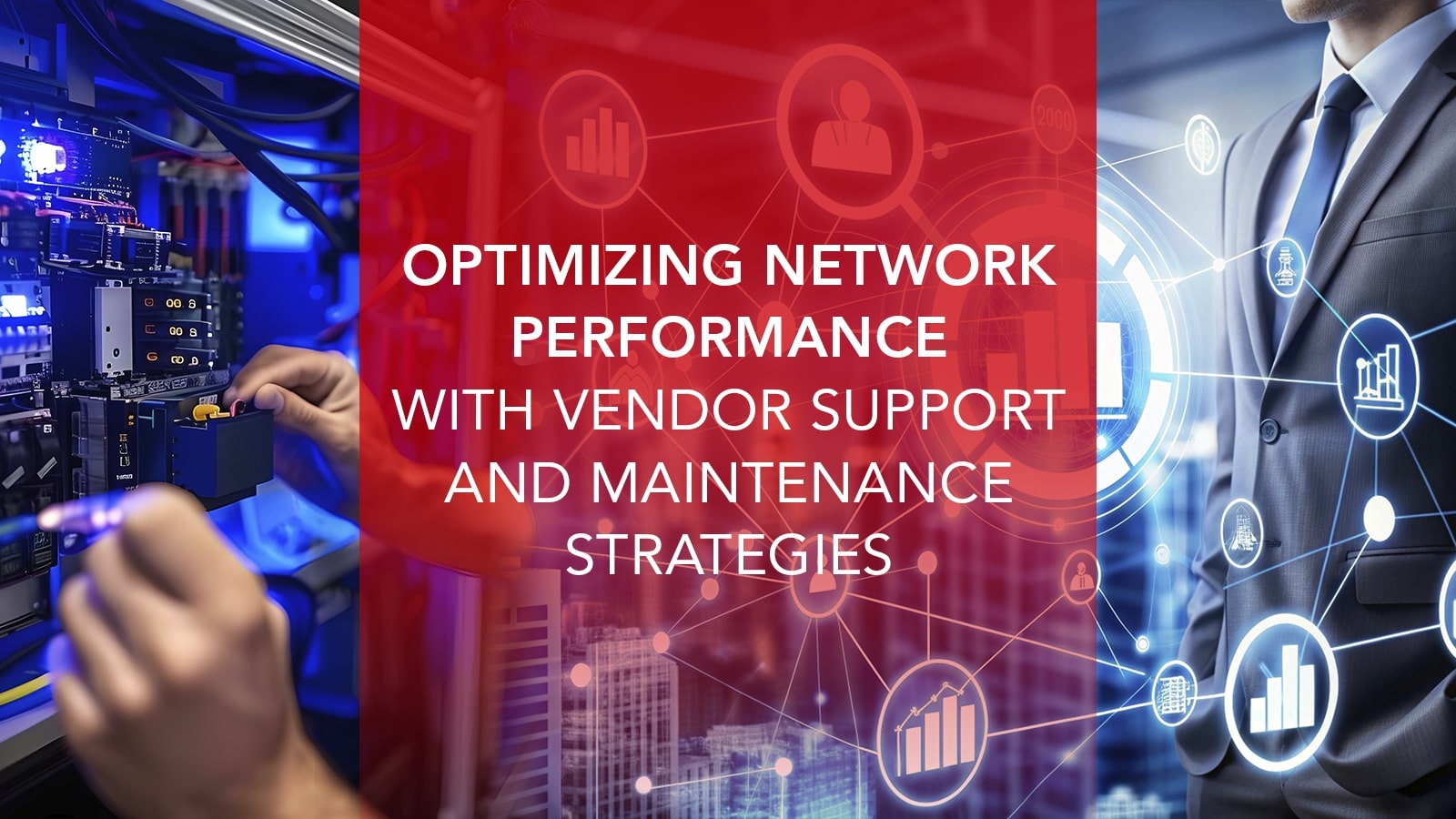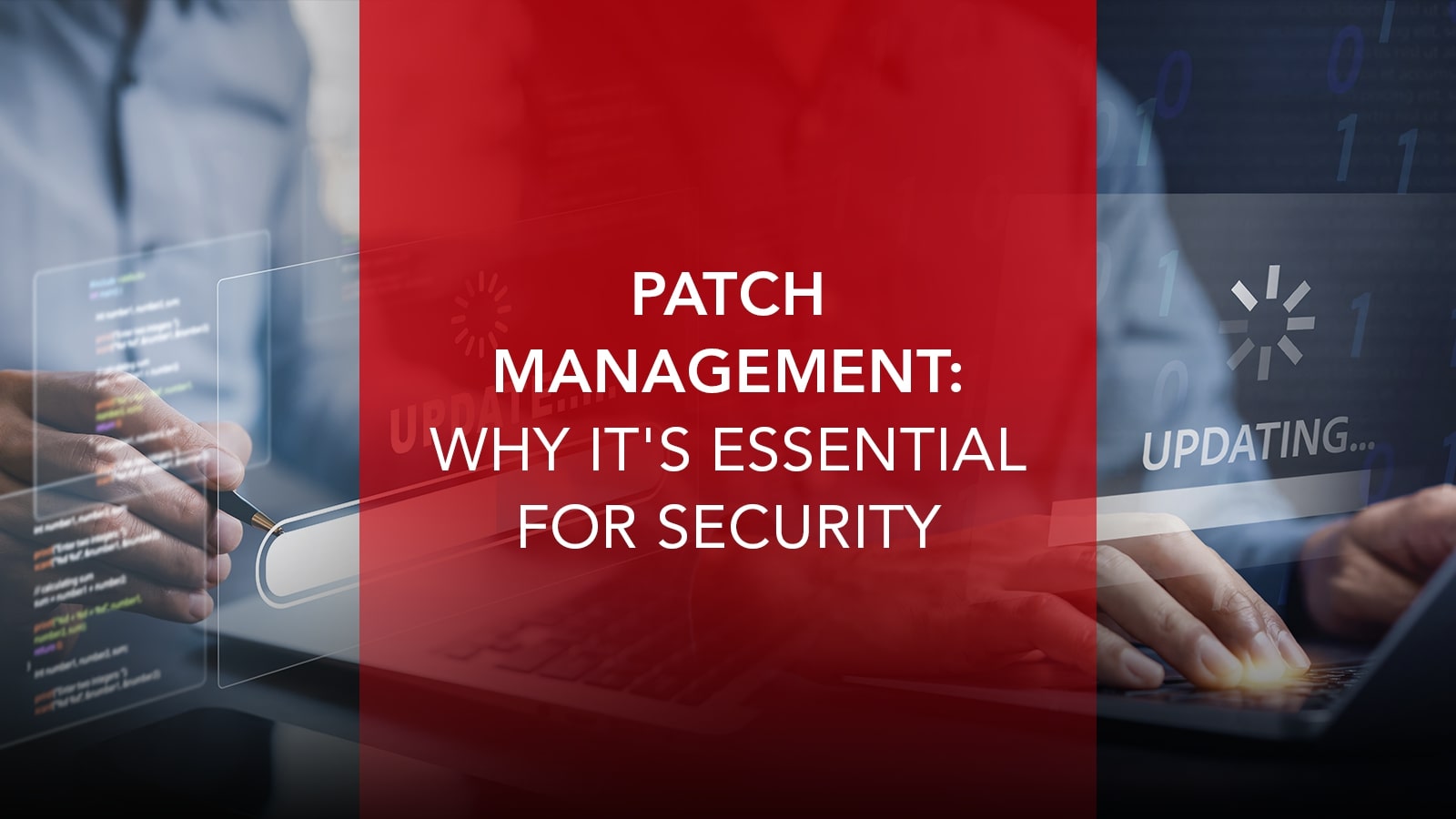In today’s connected world, optimizing network performance is not just an IT priority–it’s a business imperative. Whether your organization relies on hybrid work, cloud-based platforms, or customer-facing applications, network reliability directly impacts productivity, security, and profitability. A single outage or slowdown can ripple across your operations, leading to frustrated employees, lost revenue, and diminished customer trust. To avoid these pitfalls, organizations need a thoughtful blend of network optimization strategies, vendor partnerships, and proactive maintenance.
Why Network Performance Matters More than Ever
Modern organizations depend on fast, stable, and secure networks to keep their people and systems connected. A decade ago, downtime may have been an inconvenience. Today, it can derail an entire enterprise.
The Shift to Hybrid and Remote Work
Remote and hybrid teams rely heavily on secure VPNs, collaboration suites, and real-time communication tools. If network latency issues arise, video calls lag, cloud applications fail to load, and employees lose valuable time. In many cases, IT teams are left scrambling with network troubleshooting requests while business leaders demand quick fixes.
Cloud Applications and Enterprise Workflows
Cloud-based ERP, CRM, and data analytics platforms depend on consistent network throughput. Poor performance doesn’t just slow processes–it creates bottlenecks that can cascade into operational inefficiencies. Organizations running SaaS-heavy ecosystems must prioritize network performance monitoring tools and responsive vendor relationships to stay competitive.
The Financial Impact of Downtime
The costs of an unstable network go beyond employee frustration. Consider these potential costs of network downtime:
- Direct Costs – Lost revenue from halted sales or service interruptions
- Indirect Costs – Decreased productivity, missed deadlines, and reputational damage
- Security Risks – Gaps in monitoring or patching that expose vulnerabilities
Simply put, network downtime costs can reach thousands–or even millions–depending on the industry. Consistently following network uptime best practices ensures that downtime is the exception, not the rule.
Beyond daily productivity, industries with mission-critical systems depend on reliable networks in ways that leave little room for error. In healthcare, for example, clinicians rely on electronic medical records, telehealth platforms, and diagnostic imaging. A delay caused by network latency issues can interrupt patient care. In financial services, even milliseconds of disruptions can impact high-frequency trading, credit card processing, or fraud detection systems. Retailers depend on point-of-sale terminals, inventory management, and omnichannel shopping platforms–meaning downtime hits both in-store and online revenue streams simultaneously.
Compliance and Regulatory Demands
Compliance also factors into performance. Many industries must meet regulatory standards such as HIPAA, PCI DSS, or GDPR. A poorly maintained network risks downtime that can cause failed audits or, worse, expose sensitive data. When regulations demand secure and continuous access, IT infrastructure support becomes a business enabler rather than an overhead cost.

Common Causes of Network Performance Issues
Even the most advanced networks encounter challenges. The key is knowing where issues originate so they can be addressed before becoming critical.
Hardware Failures
Network devices, like all technology, degrade over time. Switches, routers, and firewalls have a finite network equipment lifecycle. Without replacement planning, outdated gear can trigger slowdowns or outages. Some of the most common points of failure include:
- Overheating components
- Failing power supplies
- Out-of-warranty devices with no vendor coverage
This is where a robust hardware maintenance schedule comes into play. Proactive replacements and vendor-provided spares reduce surprises.
It’s not just aging equipment that causes issues–environmental factors matter too. Excessive heat, poor airflow, or unstable power supplies can shorten device lifespans. Vendors often recommend environmental monitoring sensors and redundant power supplies to mitigate these risks. Without these safeguards, even newer devices may fail unexpectedly, underscoring the need for vendor-backed warranties and maintenance coverage.
Configuration Errors
Human error remains a major contributor to downtime. Misconfigured devices or inconsistent firmware versions can destabilize traffic flow. Firmware patch management also plays a role–skipping updated leaves gaps that reduce efficiency and increase security risks.
A real-world example illustrates the point: a single misconfigured firewall rule at a mid-sized financial firm blocked external DNS lookups for hours, halting all internet access. With proper network documentation and vendor support escalation, that downtime could have been reduced from hours to minutes.
Lack of Regular Maintenance
Some IT teams operate in a reactive mode–only addressing problems when they occur. Without recurring updates, patch cycles, and usage analysis, small inefficiencies can compound into outages. For example:
- Ignoring firmware updates leads to compatibility issues.
- Skipping performance reviews makes it harder to spot trends.
- Postponing capacity planning can result in traffic congestion.
This is why consistent network health checks and maintenance cycles are non-negotiable. And while identifying root causes is critical, the real advantage comes from preventing these issues altogether–which is where vendor support plays a key role.
The Role of Vendor Support in Network Optimization
Vendor relationships are a cornerstone of sustainable network performance. Whether through OEM contracts or third-party agreements, vendor maintenance support provides resources and expertise that internal IT teams may not have.
How Vendor Support Helps Optimize Performance
- Proactive network monitoring tools provided by vendors often detect anomalies before they can escalate.
- Many vendors streamline the Return Merchandise Authorization (RMA) process, delivering replacements quickly to minimize downtime.
- With defined Service Level Agreements (SLA) for networking support, organizations gain assurance that issues will be addressed within guaranteed timeframes.
Vendor support also strengthens security. Patches and updates are delivered promptly, closing vulnerabilities before attackers can exploit them. In industries where compliance is critical, this is invaluable.
Vendor contracts often come in tiered levels–basic support may only cover break-fix scenarios, while advanced tiers provide proactive health checks, predictive analytics, and prioritized escalation. Choosing the right tier depends on the criticality of the environment. For a global enterprise, relying solely on break-fix support could mean extended downtime. Premium SLA for networking support agreements ensures access to experts 24/7, reducing network downtime costs significantly. Increasingly, vendors also embed AI-driven network performance monitoring tools that anticipate problems, such as abnormal traffic spikes, before they cause outages.
Building Strong Vendor Partnerships
An effective IT hardware vendor relationship isn’t just transactional–it’s strategic. Strong ties help organizations:
- Access early-release patches and updates
- Gain insights into network optimization strategies specific to their hardware
- Streamline escalations through multi-vendor network support when complex infrastructures are in play
For IT leaders, these partnerships create leverage–turning vendors into allies rather than just suppliers.

Maintenance Strategies to Keep Your Network Running Smoothly
Even with vendor support, internal teams must remain proactive. Maintenance strategies bridge the gap between day-to-day operations and long-term reliability.
Scheduled Hardware Health Checks
Performing monthly or quarterly network health checks ensures that potential risks are caught early. IT teams should:
- Review performance logs for recurring errors
- Inspect physical hardware for wear
- Verify capacity against projected demand
A structured hardware maintenance schedule keeps devices functioning at peak performance.
Network Documentation and Configuration Backups
When outages occur, recovery speed is critical. Maintaining accurate network documentation–topology diagrams, configuration details, and backup files–reduces downtime significantly. If a device fails, IT can restore services quickly without introducing new network troubleshooting errors.
Lifecycle Planning and Equipment Refreshes
Every piece of network hardware has an expiration date. Planning refresh cycles ahead of time avoids last-minute emergencies. A typical network equipment lifecycle might include:
- Access switches: 3-5 years
- Core switches/routers: 5-7 years
- Firewalls/security appliances: 4-6 years
Regular reviews ensure organizations stay ahead of end-of-life announcements, preventing both performance degradation and warranty gaps. Running hardware past its end-of-life doesn’t just risk outages–it raises hidden costs. Older devices often consume more power, run hotter, and require more frequent reboots or manual intervention. They may also stop receiving security patches, leaving the network exposed. The longer they remain in production, the higher the risk of costly emergency replacements and downtime.
Early warning signs of equipment nearing end-of-life include:
- Increased frequency of error logs or crashes
- Limited firmware updates available
- Rising support contract costs
- Performance bottlenecks under normal workloads
Proactive refresh cycles based on your hardware maintenance schedule help avoid these pain points entirely.
Partnering with a Managed Security Service Provider (MSSP) for Long-Term Performance
For many organizations, balancing in-house management with growing complexity is overwhelming. This is where managed network and security services come into play.
Benefits of working with an MSSP
- 24/7 proactive network monitoring with alerts for unusual activity or potential threats
- Continuous firmware patch management to ensure consistency and security
- Vendor escalation handled directly, streamlining the RMA process
- Access to remote network monitoring services that support distributed teams
MSSPs also bring a broader view of enterprise network management, applying lessons learned across multiple clients to strengthen your environment. Remote network monitoring services deliver particular value for organizations with global operations or distributed workforces. Instead of relying on an internal team working standard business hours, MSSPs provide 24/7 visibility across all time zones. That means alerts are investigated immediately–whether an issue arises at 3pm in New York or at 2am in London.
MSSPs also reduce vendor complexity. Many enterprises use hardware from multiple vendors–Cisco, Juniper, Palo Alto, Fortinet, and others. In a crisis, vendor finger-pointing can delay resolution. MSSPs act as the “translator,” offering multi-vendor network support and taking ownership of escalations until a problem is resolved.
Finally, MSSPs are cost-efficient. Hiring and training internal specialists for every technology stack is expensive and impractical. With managed network services, organizations access broad expertise for a predictable monthly cost, making it easier to align IT spending with business strategy.
How MSSPs support optimization
By integrating IT infrastructure support with vendor coordination, MSSPs offer:
- Faster response to outages or performance concerns
- Predictable service delivery through clear SLA for networking support
- Comprehensive visibility into device health, traffic patterns, and application dependencies
This holistic approach reduces downtime, minimizes network latency issues, and keeps operations smooth–even as networks scale.
Final Thoughts: Make Network Optimization a Strategic Priority
Networks are the circulatory system of modern organizations. Without deliberate strategies, downtime, latency, and inefficiencies can drain resources and compromise security. By combining vendor maintenance support, proactive planning, and managed network services, IT leaders can turn networks from bottlenecks into competitive advantages.
To keep networks resilient and reliable, organizations should focus on:
- Regular network health checks
- Strong IT hardware vendor relationships
- Lifecycle planning with clear hardware maintenance schedules
- Effective partnerships for multi-vendor network support
Ultimately, optimizing network performance requires viewing your network as a strategic asset, not just a utility. When vendor collaboration and maintenance strategies align, organizations achieve the trifecta of performance: stability, scalability, and security.
Ready to transform your network into a resilient, high-performance asset? VirtualArmour specializes in enterprise network management, vendor coordination, and proactive monitoring to keep your business running smoothly. Whether you need managed network services, expert guidance on IT hardware vendor relationships, or help designing a long-term plan for optimizing network performance, our team is here to help.
Contact VirtualArmour today to schedule a consultation and take the first step toward a stronger, more reliable network.





